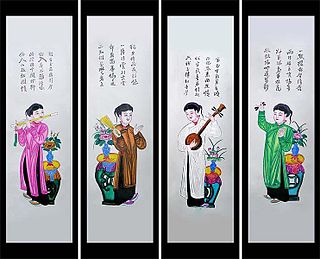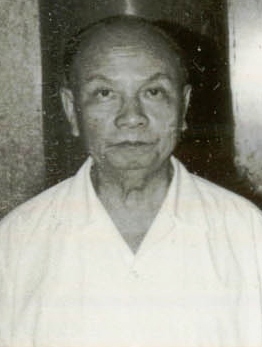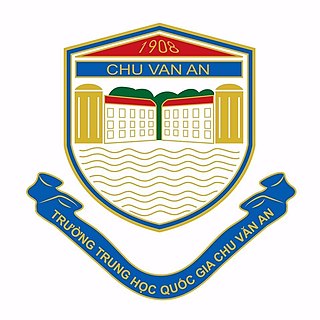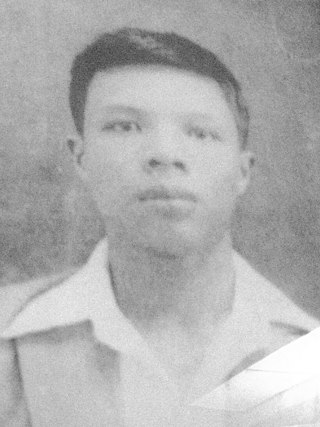
The prehistory of Vietnam can be traced back to the arrival of Ancient East Eurasian hunter-gatherers that arrived at least 40,000 years ago. As part of the Initial Upper Paleolithic wave, the Hoabinhians, along with the Tianyuan man, are early members of the Ancient Basal East and Southeast Asian lineage deeply related to present-day East and Southeast Asians. Human migration into Vietnam continued during the Neolithic period, characterized by movements of Southern East Asian populations that expanded from Southern China into Vietnam and South East Asia. See also Genetic history of East Asians. The earliest agricultural societies that cultivated millet and wet-rice emerged around 1700 BCE in the lowlands and river floodplains of Vietnam are associated with this Neolithic migration, indicated by the presences of major paternal lineages that are represented by East Eurasian-affiliated Y-haplogroups O, C2, and N.

The Nguyễn dynasty was the last Vietnamese dynasty, which was preceded by the Nguyễn lords and ruled the unified Vietnamese state independently from 1802 to 1883 before being a French protectorate. During its existence, the empire expanded into modern-day southern Vietnam, Cambodia, and Laos through a continuation of the centuries-long Nam tiến and Siamese–Vietnamese wars. With the French conquest of Vietnam, the Nguyễn dynasty was forced to give up sovereignty over parts of southern Vietnam to France in 1862 and 1874, and after 1883 the Nguyễn dynasty only nominally ruled the French protectorates of Annam as well as Tonkin. They later cancelled treaties with France and were the Empire of Vietnam for a short time until 25 August 1945.
Articles related to Vietnam and Vietnamese culture include:

Trường Chinh, born Đặng Xuân Khu; 9 February 1907 – 30 September 1988) was a Vietnamese communist political leader, revolutionary and theoretician. He was one of the key figures of Vietnamese politics and the important Vietnamese leaders for over 40 years. He played a major role in the anti-French colonialism movement and finally after decades of protracted war in Vietnam, the Vietnamese defeated the colonial power. He was the think-tank of the Communist Party who determined the direction of the communist movement, particularly in the anti-French colonialism movement. After the declaration of independence in September 1945, Trường Chinh played an important role in shaping the politics of the Democratic Republic of Vietnam (DRV) and creating the socialist structure of the new Vietnam.

Paris By Night 91: Huế, Sài Gòn, Hà Nội is a Paris By Night program produced by Thúy Nga that was filmed at the Terrace Theater at the Long Beach Convention and Entertainment Center on January 12, 2008 and January 13, 2008.

Chu Van An High School, also known as Chu Van An National School or Pomelo School one of the three national high schools for the gifted in Vietnam along with Quoc Hoc High School in Huế and Le Hong Phong High School in Ho Chi Minh City. It is also one of the four magnet high schools in Hanoi, Vietnam, along with Hanoi-Amsterdam High School, Son Tay High School and Nguyen Hue High School. Established by the French authorities in 1908 as College of the Protectorate, Chu Van An is one of the oldest institutions for secondary education in Southeast Asia. Despite initially intending to train native civil servants to serve the French colonial establishments, Vietnamese students at Bưởi school often struggled against colonial doctrine. A lot of Bưởi alumni became renowned political leaders and cultural figures in many areas of Vietnamese society such as Nguyễn Văn Cừ – the fourth general secretary of Communist Party of Vietnam, Phạm Văn Đồng – the first prime minister of North Vietnam and united Vietnam, Nguyễn Cao Kỳ- former vice president and prime minister of South Vietnam, Kaysone Phomvihane- former leader of the Lao People's Revolutionary Party, Prince Souphanouvong- the first president of Laos.
Duke Hôn Đức, real name Dương Nhật Lễ (楊日禮), was the emperor of Đại Việt from 1369 to 1370. Although not coming from the Trần clan, Dương Nhật Lễ was ceded the throne of the Trần Dynasty by an edict of Emperor Trần Dụ Tông shortly before his death. During his short reign, Dương Nhật Lễ tried to change his family name back to Dương, which enraged members of the royal family and ultimately resulted in his deposal and death and the coronation of Trần Nghệ Tông. The rise and fall of Dương Nhật Lễ was the starting point for a series of chaotic events in the royal court that led to the collapse of the Trần Dynasty.

Trần Duệ Tông, real name Trần Kính (陳曔), was the ninth emperor of the Trần dynasty who reigned Vietnam from 1373 to 1377. Duệ Tông succeeded the throne from his brother Trần Nghệ Tông who was credited with the re-establishment of Trần clan's ruling in Vietnam from Hôn Đức Công. During his short-lived reign, Duệ Tông had to witness the rising of Hồ Quý Ly in the imperial court and several consecutive attacks in Vietnam from Chế Bồng Nga, king of Champa. In 1377 Duệ Tông decided to personally command a major military campaign against Champa, this campaign was ended by the disastrous defeat of Trần's army in Battle of Vijaya where Duệ Tông himself was killed in action with many other high-ranking mandarins and generals of Vietnam. Duệ Tông's death was one of the main events that led to the collapse of Trần Dynasty in 1400.
Following is the family tree of Vietnamese monarchs from the autonomous period of the Khúc clan (905–923) to the reign of Bảo Đại (1926–1945), the last emperor of the Nguyễn dynasty. Emperors, kings and lords of each monarch are denoted by different colours with the period of their reigns.

Trần Văn Cung was a Vietnamese revolutionary, who was the secretary of the first communist cell in Vietnam.

Nguyễn Văn Cừ was a Vietnamese revolutionary, a descendant of Nguyễn Trãi. He served as the fourth General Secretary of the Central Committee of the Communist Party of Vietnam (CPV) 30 March 1938 – 9 November 1940.
The following is a list of political organizations and armed forces in Vietnam, since 1912:
The Vietnamese Revolutionary Youth League, or Thanh Niên for short, was founded by Nguyen Ai Quoc in Guangzhou in the spring of 1925. It is considered as the “first truly Marxist organization in Indochina” and “the beginning of Vietnamese Communism”. With the support of the Chinese Communist Party and the Kuomintang left, from 1925 to 1927, the League managed to educate and train a considerable number of Marxist-Leninist revolutionaries, preparing the prominent leadership for the Communist Party of Vietnam and the Vietnamese Revolution. At the time, Vietnam was part of colonial French Indochina.

The House of Nguyễn Phúc, also known as the House of Nguyễn Phước, was a ruling family of Vietnam. It ruled from the city of Huế in central Vietnam beginning in 1636. As the Nguyễn lords, they often fought with the Trịnh lords, who were based in Hanoi. They were overthrown by the Tây Sơn dynasty in 1776.

The seals of the Nguyễn dynasty can refer to a collection of seals specifically made for the emperors of the Nguyễn dynasty, who reigned over Vietnam between the years 1802 and 1945, or to seals produced during this period in Vietnamese history in general.

The abdication of Bảo Đại took place on 25 August 1945 and marked the end of the 143-year reign of the Nguyễn dynasty over Vietnam ending the Vietnamese monarchy. Emperor Bảo Đại abdicated in response to the August Revolution. A ceremony was held handing power over to the newly established Democratic Republic of Vietnam, which was established during the end of World War II in Asia as Vietnam had been occupied by French and later Japanese imperialists.

The government of the Nguyễn dynasty, officially the Southern dynasty and commonly referred to as the Huế Court, centred around the emperor as the absolute monarch, surrounded by various imperial agencies and ministries which stayed under the emperor's presidency. Following the signing of the Patenôtre Treaty the French took over a lot of control and while the government of the Nguyễn dynasty still nominally ruled the French protectorates of Annam and Tonkin, in reality the French maintained control over these territories and the Nguyễn government became subsidiary to the administration of French Indochina. During World War II the Japanese launched a coup d'état ousting the French and establishing the Empire of Vietnam which was ruled by the Nguyễn government. During the August Revolution the Nguyễn government was abolished in the aftermath of World War II.

During the Nguyễn dynasty period (1802–1945) of Vietnamese history its Ministry of Education was reformed a number of times, in its first iteration it was called the Học Bộ which was established during the reign of the Duy Tân Emperor (1907–1916) and took over a number of functions of the Lễ Bộ, one of the Lục Bộ. The Governor-General of French Indochina wished to introduce more education reforms, the Nguyễn court in Huế sent Cao Xuân Dục and Huỳnh Côn, the Thượng thư of the Hộ Bộ, to French Cochinchina to discuss these reforms with the French authorities. After their return the Học Bộ was established in the year Duy Tân 1 (1907) with Cao Xuân Dục being appointed to be its first Thượng thư (minister). Despite nominally being a Nguyễn dynasty institution, actual control over the ministry fell in the hands of the French Council for the Improvement of Indigenous Education in Annam.

Trần Chánh Thành was a South Vietnamese diplomat and politician who served as Deputy Prime Minister of the State of Vietnam under Prime Minister Ngô Đình Diệm from 1954 to 1955. He played a crucial role as Minister of Information, which helped lead the ouster of Bảo Đại in the 1955 referendum. After the establishment of the Republic of Vietnam, he would go on to serve in South Vietnam's first President Ngô Đình Diệm's government as the Minister of Information and the Minister of Foreign Affairs of South Vietnam under the premiership of Prime Minister Trần Văn Hương.

The 5th Central Committee of the Communist Party of Vietnam (CPV) was elected at the 5th CPV National Congress. It elected the 5th Politburo and the 5th Secretariat.













